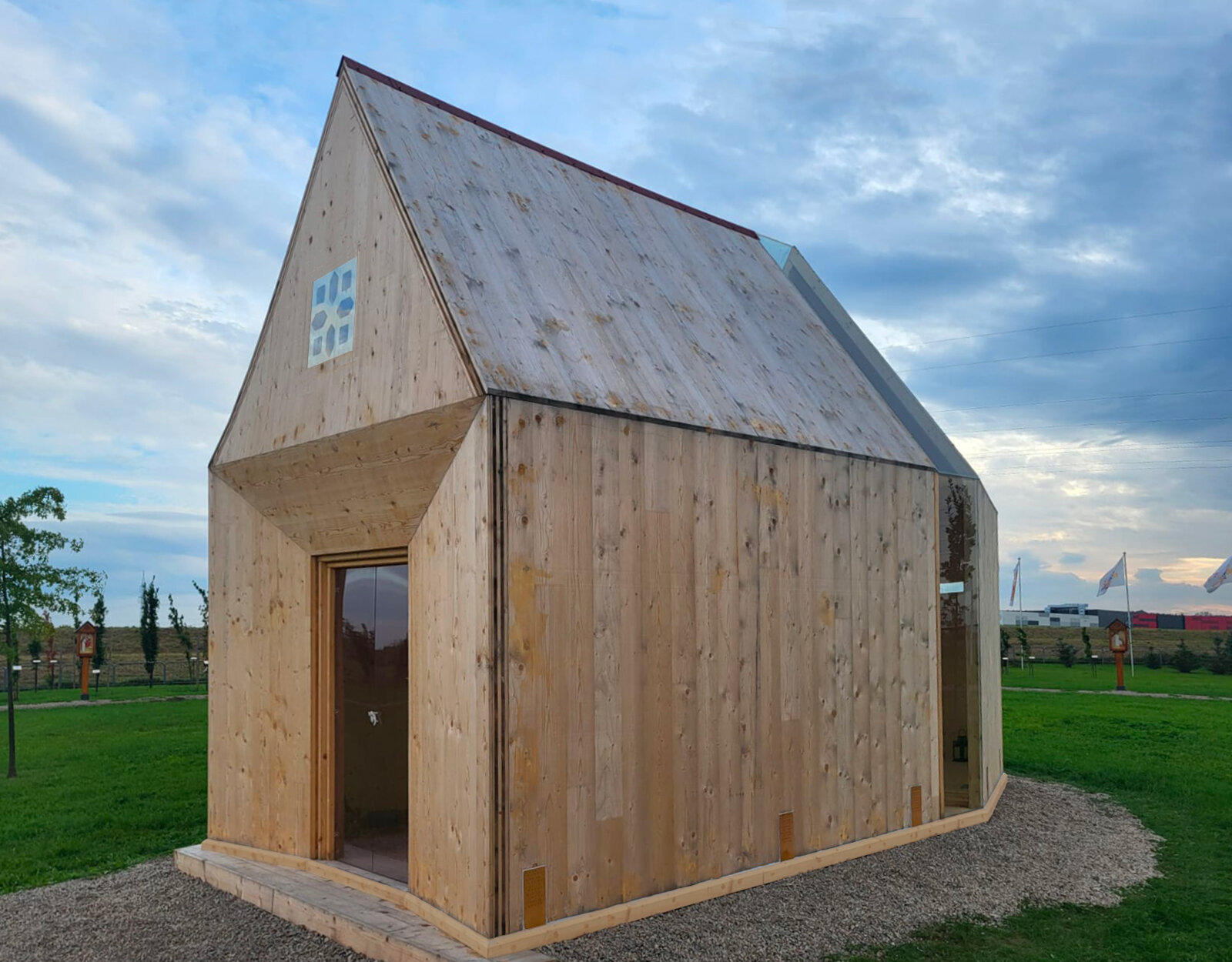
Domus Pacis - House of Peace
Authors’ Comment
The House of Peace - a space that expresses the common people's need for peace and reminds us of the role of the individual in promoting and maintaining it. The building symbolizes peace and peaceful coexistence. It is a place of reflection, hope and faith, where visitors can find inner peace in silence, clearing the mind and rebuilding the relationship between the heart and soul.
War is not a solution.
The goal of the DOMUS PACIS Chapel is to inspire, to create balance in the mind of each visitor and to give the opportunity to understand what really connects people.
This place is supposed to give people the opportunity to be and to feel close to others, to themselves and to God.
Seen from the front, the main facade carries many symbols. First, at the base, you can recognize the trilithon, one of the most ancient and most rudimentary building systems in the world, consisting of two pillars supporting a horizontal beam. Second, the entrance invites people inside in two ways - by the portal of Gothic inspiration with succeeding retracting elements, and, in terms of composition and geometry, by slightly pushing the elements of the trilith to the interior. A third element is the triangle shape above the trilith, representing the Holy Trinity, that carries the symbol of a stylized gothic rosette.
The strip of light in the altar separates the public space from the sacred space and creates from the inside the impression of God embracing the house through light.
The option to use wood has a double meaning. It is a transmission to the traditional sacral architecture that has valuable examples throughout Central and Eastern Europe. Also, wood is significant in this context as it is the material that the cross was made of, a symbol of Jesus' sacrifice and the redemption of humanity. According to Christian scholars, wood in the Bible symbolizes the humanity of Jesus Christ, and his sacrifice on the cross. Last but not least, the choice to use wood in the form of CLT as a building material underlines the commitment to a sustainable and nature-friendly future for humanity.
The crosscut into the wall behind the altar represents the end of the perspective for access and the final spot for ritual or meditation.
The symbol cut in wood above the entrance represents a stylized detail of stained glass from Saint Florian's Church in Krakow, linked to the memory of Pope Saint John Paul II as his first parish.
The project started as a research regarding sacred architecture in the current geopolitical context, and the prototype was executed in Romania and transported to Poland, with the support of the Romanian Association for Sustainable Local Development, to be replicated in several EU member states.
- IKI Retreat Măgura
- Summer pavilion
- Dorobanți Chapel
- Iris Orangerie
- Educational campus Bucharest
- Piața Romană no 7
- MUSE - Office building and headquarters of the Union of Visual Artists
- Domus Pacis - House of Peace
- H Arghezi
- The transformation of the Technological High School
- Deja Blue Guesthouse
- Arena Oradea
- Mercure Conacul Cozieni
- The Delfinului Market: Modernization, interior reconfiguration, expansion, façade remodeling, and structural steel reinforcement
- Top Line Dorobanti
- Hotel Radisson Blu Aurum Brașov
- ETIAS Unit National Headquarters
- Romulus MMZ















